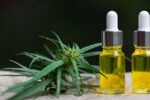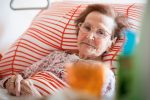The History of Microscope and Microscopy Now

Antoine van Leeuwenhoek improved upon ancient types of the microscope via putting a tiny spherical glass lens in a flexible shaft that might be controlled to concentrate on minute specimens over the 17th century. He had the ability to see microorganisms and red blood cells, which caused him to become the “father of microbiology.” Although microscopic lenses had to go a long way ahead from Leeuwenhoek’s device to become what we utilize today, their value in healthcare is evident practically because of their beginning.
Leeuwenhoek as well as other early microscopists documented bacteria, epithelial cells, protozoa, as well as other then-enigmas of the body, entering their discoveries into clinical recommendation publications. Still, it would be one more hundred year before the relevance of microscopic lens in medication was generally recognized and they would end up being vital both in medical setups, as well as at colleges worldwide.
To know about microscopy accessories, please visit the link.
Clinical Education
When you consider a microscopic lens, among the very first images that get to your mind might be a researcher in a white laboratory coat, leaning over an eyepiece. This isn’t too much from reality. Health care education counts greatly on the use of clinical microscopes to instruct students how to recognize a myriad of ailments that can be discovered in tissue or blood samples. From your first fundamental biology course you take at your university, all the way up via your pre-med courses, if you embark on the academic course to be a doctor, you will experience microscopes in the process.
Showing students how to utilize microscopes at an institution can help them identify germs creating infections once they get in the medical area. However, learning how to use the microscope is just one side. Educators can use digital microscopes using cams to forecast photos for the whole class to see. Digital microscopes utilize optics and a digital camera to relay pictures onto a computer. Still, images, as well as videos, can be forecasted in real-time so a whole lecture hall is able to observe a similar specimen. Professors utilize these devices to make certain everybody views the same photo, avoiding the variations that emerge from trainees taking resort to explore an eyepiece individually.






